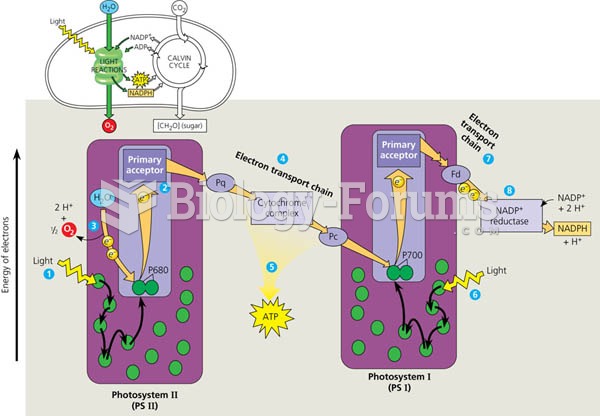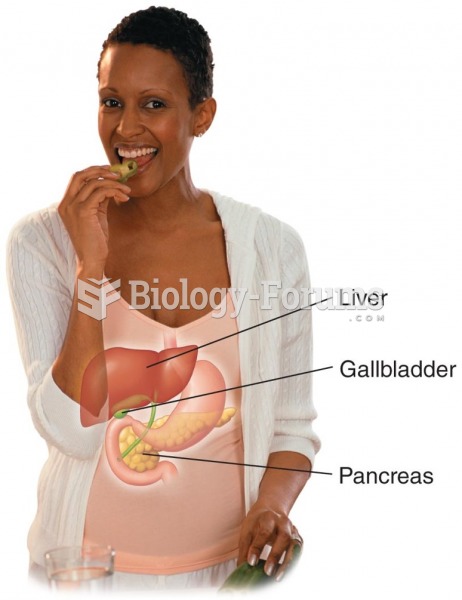|
|
|
Many people have small pouches in their colons that bulge outward through weak spots. Each pouch is called a diverticulum. About 10% of Americans older than age 40 years have diverticulosis, which, when the pouches become infected or inflamed, is called diverticulitis. The main cause of diverticular disease is a low-fiber diet.
Patients should never assume they are being given the appropriate drugs. They should make sure they know which drugs are being prescribed, and always double-check that the drugs received match the prescription.
The heart is located in the center of the chest, with part of it tipped slightly so that it taps against the left side of the chest.
The first oncogene was discovered in 1970 and was termed SRC (pronounced "SARK").
The human body produces and destroys 15 million blood cells every second.







